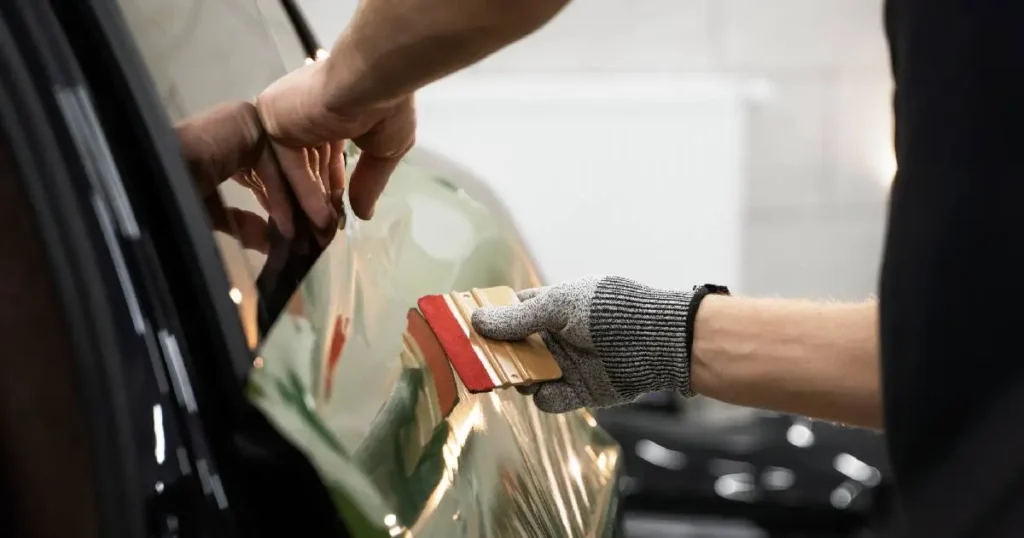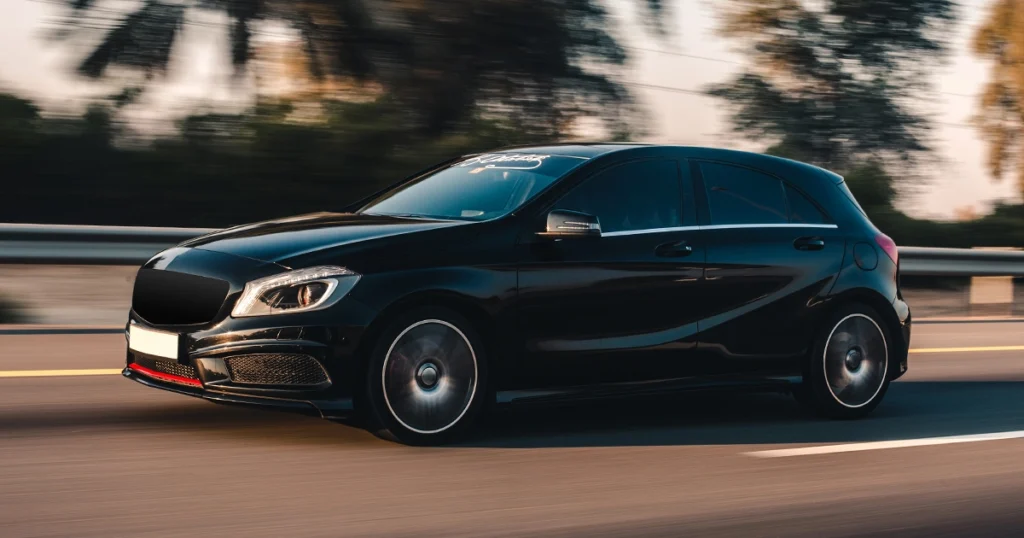
Car vinyl wraps have revolutionized vehicle customization, offering a vibrant, protective, and reversible alternative to traditional paint. From sleek matte finishes to bold color changes and intricate graphic designs, a car vinyl wrap transforms your vehicle’s appearance, making it stand out from the crowd. However, like any investment, a vinyl wrap requires proper care and maintenance to ensure its longevity, preserve its aesthetic appeal, and protect the underlying paintwork.
This ultimate guide will delve into everything you need to know about caring for your car vinyl wrap, covering essential cleaning techniques, product recommendations, preventative measures, and troubleshooting common issues. By following these guidelines, you can enjoy your wrapped vehicle for years to come, keeping it looking as fresh as the day it was installed.
Understanding Your Car Vinyl Wrap
Before we dive into the specifics of maintenance, it’s crucial to understand what a car vinyl wrap actually is. Typically made from a durable, self-adhesive PVC film, vinyl wraps are applied directly to your vehicle’s painted surfaces. They come in various finishes, including gloss, matte, satin, chrome, and textured options, each with its unique characteristics and maintenance considerations.
A high-quality vinyl wrap, properly installed, can last anywhere from 3 to 7 years, depending on the material, exposure to elements, and, most importantly, how well it’s maintained. It acts as a protective layer, shielding your original paint from minor scratches, stone chips, UV damage, and environmental contaminants.
The Golden Rule- Regular and Gentle Cleaning
The cornerstone of car vinyl wrap maintenance is regular and gentle cleaning. Just like with painted vehicles, allowing dirt, grime, and contaminants to sit on the surface for extended periods can lead to staining, discoloration, and even damage to the vinyl.
What You’ll Need-
- Two Buckets- One for soapy water, one for rinse water (to prevent cross-contamination).
- pH-Neutral Car Wash Soap- Specifically designed for car exteriors. Avoid harsh detergents or degreasers.
- Microfiber Wash Mitts- Soft and non-abrasive to prevent scratching.
- Soft Microfiber Drying Towels- Highly absorbent to prevent water spots.
- Hose with a Spray Nozzle- For rinsing.
- Optional- Pressure Washer (Use with Caution!)- If using, maintain a distance of at least 3 feet and keep the pressure below 1200 PSI.
The Washing Process-
- Rinse Thoroughly- Start by thoroughly rinsing your entire vehicle with water to remove loose dirt and debris. This prevents scratching during the washing phase.
- Prepare Soapy Water- Fill one bucket with water and add a generous amount of pH-neutral car wash soap according to the product instructions.
- Wash Section by Section- Dip your microfiber wash mitt into the soapy water and gently wash one section of your vehicle at a time (e.g., roof, hood, door). Use straight-line motions rather than circular ones to minimize swirl marks.
- Rinse Your Mitt Frequently- After washing each section, rinse your wash mitt in the clean water bucket to remove accumulated dirt before dipping it back into the soapy water. This is crucial for preventing scratches.
- Rinse Immediately- After washing each section, or once the entire vehicle is soaped, immediately rinse off the soap thoroughly with clean water. Do not let soap dry on the vinyl, especially in direct sunlight, as it can leave streaks or water spots.
- Dry Promptly- This is a critical step for car vinyl wrap care. Water spots are more noticeable and harder to remove on vinyl, especially matte finishes. Use soft, clean microfiber drying towels to gently blot and wipe the entire vehicle dry. Start from the top and work your way down.
Specific Considerations for Different Finishes
While the general cleaning principles apply to all wraps, some finishes require extra attention-
- Matte and Satin Wraps- These finishes are particularly susceptible to showing grease, fingerprints, and water spots. Avoid using waxes or polishes that contain petroleum distillates, as they can alter the finish, making it shiny or patchy. Use products specifically formulated for matte finishes.
- Chrome Wraps- Chrome vinyl is very delicate and easily scratches. Be extra gentle during washing and drying. Avoid abrasive cloths or harsh chemicals.
- Textured Wraps- These can trap dirt more easily in their textured surfaces. Pay extra attention to these areas during washing to ensure all contaminants are removed.
Product Recommendations for Car Vinyl Wrap Care
Choosing the right products is paramount to maintaining your car vinyl wrap. Look for products that are specifically labeled as safe for vinyl or “wrap-friendly.”
- pH-Neutral Car Wash Soap- Brands like Chemical Guys, Meguiar’s, and Griot’s Garage offer excellent pH-neutral car soaps.
- Vinyl Wrap Cleaner/Detailer- These products are designed to safely remove light contaminants, fingerprints, and smudges between washes without damaging the vinyl. 3M, Avery Dennison, and Chemical Guys all offer dedicated wrap care products.
- Matte Finish Sealant/Detailer (for matte wraps)- These products help protect matte finishes without adding shine. Dr. Beasley’s Matte Paint Prescription and Chemical Guys Meticulous Matte Auto Wash are popular choices.
- Ceramic Coating (Optional, for added protection)- Some ceramic coatings are formulated for vinyl wraps and can provide an extra layer of protection against UV rays, chemicals, and environmental contaminants. Consult with a professional installer or product manufacturer to ensure compatibility.
Products to AVOID
- Wax and Polishes (unless specified for vinyl)- Many traditional waxes and polishes contain abrasives or fillers that can clog the pores of the vinyl, leading to discoloration, hazing, or difficulty in removing.
- Solvent-Based Cleaners/Degreasers- These can aggressively attack the vinyl, causing it to swell, crack, or delaminate.
- Abrasive Compounds or Rubbing Alcohol- Will scratch or damage the vinyl surface.
- Automatic Car Washes with Brushes- The harsh brushes and chemicals used in these washes can scratch, tear, or lift the edges of your wrap. Stick to touchless car washes if you must, but hand washing is always preferred.
Dealing with Tough Stains and Contaminants
Even with the best care, your car vinyl wrap might encounter stubborn contaminants.
- Bug Splatter and Bird Droppings- These are highly acidic and can etch into the vinyl if left on too long. Remove them as soon as possible with a vinyl-safe bug and tar remover or a quick detailer. Let the product dwell for a moment, then gently wipe away.
- Tree Sap- Similar to bug splatter, tree sap can be very damaging. Use a vinyl-safe sap remover, or gently dab with rubbing alcohol on a microfiber cloth, then immediately rinse the area.
- Fuel Spills- If fuel spills on your wrap, wipe it off immediately with a clean microfiber cloth. Fuel can stain and degrade the vinyl. Rinse the affected area thoroughly with water afterward.
- Road Tar- Use a dedicated tar remover that is safe for vinyl wraps. Apply to a microfiber cloth and gently dab at the tar until it dissolves.
Preventative Measures for Longevity
Beyond regular cleaning, a few preventative measures can significantly extend the life and beauty of your car vinyl wrap.
- Park in the Shade- Prolonged exposure to direct sunlight and harsh UV rays can cause vinyl to fade, crack, or degrade over time. Whenever possible, park your wrapped vehicle in a garage or shaded area.
- Avoid Harsh Chemicals and Spills- Be mindful of where you park and what might drip onto your car (e.g., oil, coolant, battery acid). Clean up any spills immediately.
- Regular Inspections- Periodically inspect your wrap for any signs of lifting edges, bubbles, or damage. Addressing small issues early can prevent them from becoming larger, more costly problems.
- Professional Installation and Removal- Always have your wrap installed and, if necessary, removed by a professional. Poor installation can lead to premature lifting, bubbling, and damage to the underlying paint.
- Mind Your Edges- The edges of your wrap are the most vulnerable points. Avoid directing high-pressure water streams directly at seams or edges during washing.
Troubleshooting Common Car Vinyl Wrap Issues
- Lifting Edges- Small lifting edges can sometimes be re-adhered by gently applying heat with a heat gun (on a low setting, keeping it moving) and pressing the vinyl back down with a soft cloth. For significant lifting, consult your installer.
- Bubbling- Small bubbles can sometimes be pricked with a very fine needle and then smoothed out with a squeegee or soft cloth. Avoid this if you’re unsure, as improper technique can damage the vinyl.
- Discoloration/Staining- If you notice discoloration, revisit your cleaning routine and ensure you’re using pH-neutral, vinyl-safe products. If it persists, it might indicate prolonged exposure to a harsh chemical or contaminant.
- Scratches- Minor surface scratches on gloss wraps can sometimes be buffed out with a vinyl-safe detailer. Deep scratches often require a panel replacement. Matte wraps generally show scratches less but are harder to “fix” without replacing the section.
The Value of Professional Help
While much of your car vinyl wrap maintenance can be done at home, don’t hesitate to consult with your original installer or a reputable wrap specialist for any concerns or complex issues. They have the expertise, tools, and knowledge to diagnose problems and provide the best solutions, ensuring the longevity and pristine appearance of your investment.
A car vinyl wrap is an exceptional way to personalize and protect your vehicle. With a little diligence and the right approach to maintenance and care, you can preserve its stunning appearance for many years. Regular, gentle washing with pH-neutral products, prompt removal of contaminants, and mindful parking are the pillars of a successful wrap ownership experience. By following this ultimate guide, you’ll ensure your wrapped vehicle continues to turn heads and brings you immense satisfaction every time you hit the road.


